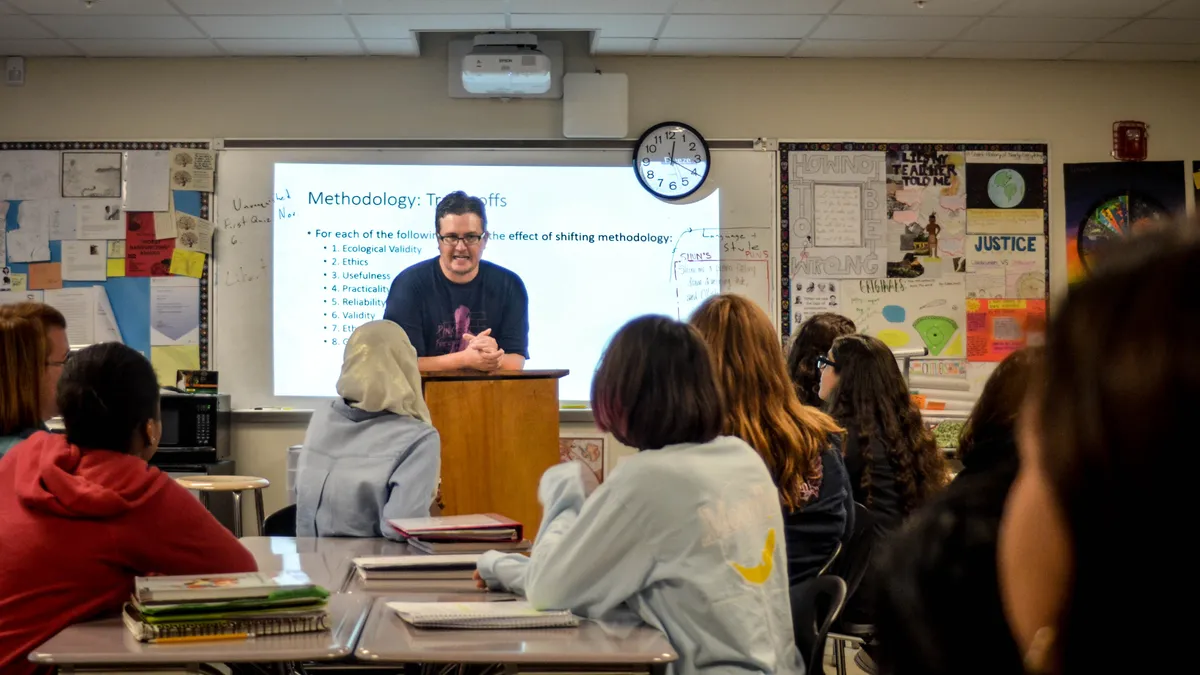Dive Brief:
- Language arts and social studies teacher Daniel Bailey writes for Edutopia that teachers should run through some exercises of their own before starting the curriculum mapping process each year.
- Some tasks include having a realistic sense of what students can and cannot handle in terms of grade-level skills and abilities, in addition to knowing what their own school administrators expect from them to focus on during the year.
- Educators should also consider differentiation — what each group of learners may need to succeed — and, finally, be willing to toss everything out should the chosen lesson plans and curriculum not work.
Dive Insight:
Curriculum development is one of the most time-consuming responsibilities for every educator. Creating a classroom learning experience that is engaging while covering the educational needs of all students is a demanding endeavor. In addition to creating effective lessons, teachers must also work closely with curriculum and academic offices at the district level and at their individual school sites to ensure they’re following both district guidelines and state standards.
But checking off those boxes can sometimes stymie a teacher eager to bring out-of-the-box methods and elements into their classroom, whether that’s virtual reality goggles, drones, a specific app that isn’t yet approved, or even an Amazon Echo that may bring up privacy concerns. Educatorswho enjoy playing in the digital sandbox and trying new technologies, however, may actually understand better than their school and district leaders the educational value of bringing these tools into the classroom.
Chief academic officers may in these cases want to be proactive and keep an open door policy. As educators consider new ways to spark students’ learning, those administrators who allow teachers to approach with new ideas during their planning processes may find valuable learning practices they’ve never considered already inside their schools.






 Dive Awards
Dive Awards






